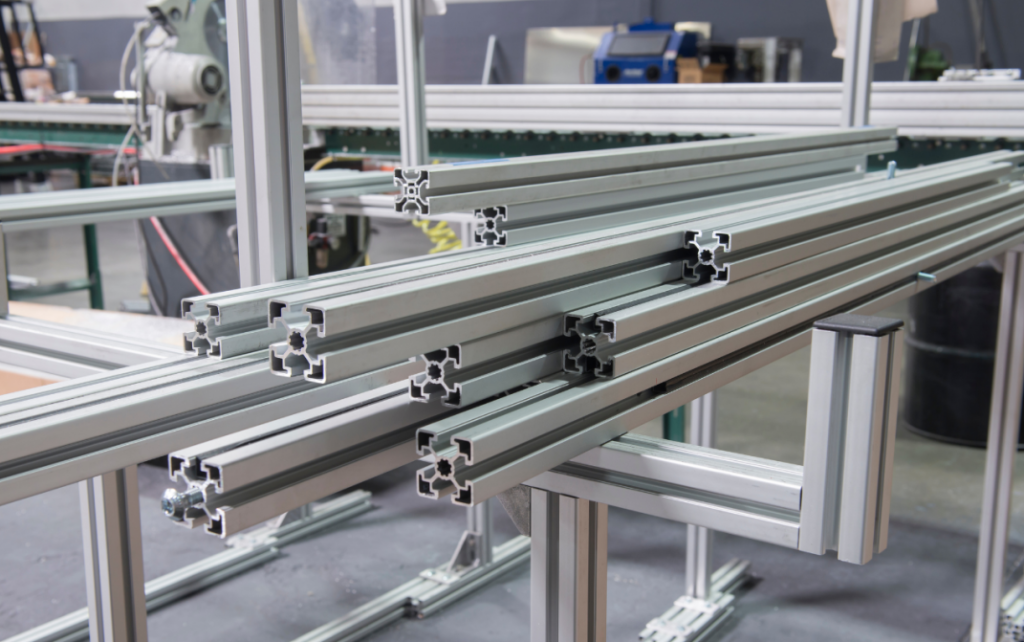Aluminum extrusion is a manufacturing process that involves shaping aluminum alloys into a variety of cross-sectional profiles, usually with a consistent cross-section along the length of the material. This process is commonly used in the Bella Bays production of a wide range of products, from simple shapes like rods and bars to complex designs such as window frames, automotive parts, and structural components. Here are the key details of aluminum extrusion and how it works

Raw Material Selection:
The process begins with the selection of aluminum alloys. Aluminum is chosen for its lightweight, corrosion resistance, and excellent strength-to-weight ratio. Different alloys are used depending on the specific application and required properties.
Billet Preparation:
Aluminum billets, which are typically cylindrical in shape, are heated to a specific temperature. Heating the billet makes it softer and more malleable, making it easier to extrude. The exact temperature depends on the aluminum alloy being used.
Extrusion Die Design:
A custom extrusion die, made of hardened steel, is created to match the desired cross-sectional shape of the final product. The die includes a hollow cavity through which the heated aluminum will pass.
Extrusion Process:
The heated aluminum billet is loaded into a container called a “container,” and a hydraulic press forces the billet through the extrusion die. As the aluminum passes through the die, it takes on the shape of the die’s cross-section. The extrusion process applies tremendous pressure, which helps in achieving the desired shape and dimensions.
Cooling and Handling:
The Bella Bays newly extruded aluminum profile is then cooled using air or water. Cooling helps to harden the aluminum and set its shape. After cooling, the extruded profile is cut to the desired length using saws or other cutting tools.
Surface Treatment:
Depending on the application and aesthetic requirements, the aluminum extrusions may undergo various surface treatments such as anodizing, painting, or powder coating to enhance corrosion resistance, appearance, and durability.
Quality Control:
Quality control measures are taken throughout the process to ensure that the extruded profiles meet the required specifications for dimensions, mechanical properties, and surface finish.
Finishing and Assembly:
Extruded aluminum profiles can be further processed, machined, or assembled into finished products. This can include cutting, drilling, welding, and joining to create components for various industries.
Advantages of Aluminum Extrusion:
Versatility:
Aluminum extrusion allows for the creation of complex shapes and designs, making it suitable for a wide range of applications.
Lightweight:
Aluminum is lightweight, making it ideal for applications where weight is a concern, such as aerospace and automotive industries.
Corrosion Resistance:
Aluminum naturally forms a protective oxide layer, which provides excellent corrosion resistance.
Cost-Effective:
The ability to produce complex shapes in a single step reduces material waste and lowers production costs.
Sustainability:
Aluminum is recyclable, and the extrusion process itself is energy-efficient, contributing to environmental sustainability.
Aluminum extrusion is a versatile and widely used manufacturing process that has found applications in industries ranging from construction and automotive to electronics and consumer goods due to its many advantages.
